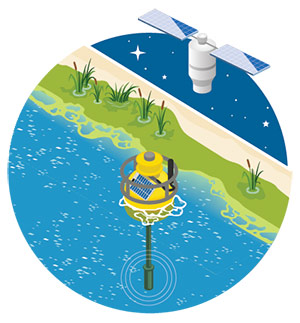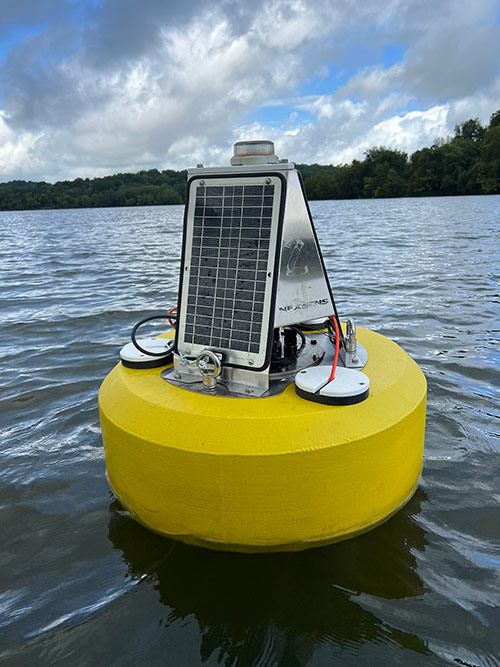
Predictive Analytics
Harmful algal blooms (HABs) are a pervasive environmental threat that impact human health, aquatic ecosystems and economies around the world. Leveraging decades of geospatial and water resources expertise, Woolpert has devised an innovative method of data collection, analysis and interpretation services that can help predict when and where HABs will form.

Woolpert’s predictive analytics merge high-resolution aerial and multispectral satellite imagery with historic water quality data, current NOAA and National Weather Service forecast data, and real-time water quality data gathered by cutting-edge sensors that remotely monitor and anticipate changing conditions.
As dynamic data are collected, they are aggregated and fed through cloud-based machine learning algorithms that predict HABs. Data are then streamlined and presented through a customized, user-friendly Esri ArcGIS dashboard, enabling everyone from environmental engineers to lake managers to state officials to easily anticipate and mitigate HABs across Ohio lakes. With these data, they can focus resources, determine the optimal timing and location of algae harvesting operations, and make informed and aligned decisions.

Predictive analytics at work
- State-of-the-art sensors monitor water quality and help predict HABs
- Accurate, real-time sensor and satellite data integrate with historic data
- User-friendly data dashboard identifies HABs and alerts officials
- Data enables resource prioritization and cost-saving mitigation
RELATED PAGE
ARTICLE
Near Real-Time Event Detection for Watershed Monitoring with CANARY
Royal Society of Chemistry
